The four cosmic animals of Tibet: also in the Tibetan tradition we have four animals that represent the quadruplicity of Heaven and Earth, they are called the Four Dignities and three of them correspond to the cosmic animals of Feng Shui.
Let’s take a step towards southern China in the area of the Tibetan mountains, where cultural exchange has always been intense and where several aspects of religious syncretism have occurred. In these areas, Tibetan Buddhism called Bon developed, which influenced and at the same time spread Feng Shui, or what was later called so, in other regions.
Also in the Tibetan tradition we have four animals that represent the quadruplicity of Heaven and Earth, they are called the Four Dignities and three of them correspond to the cosmic animals of Feng Shui.
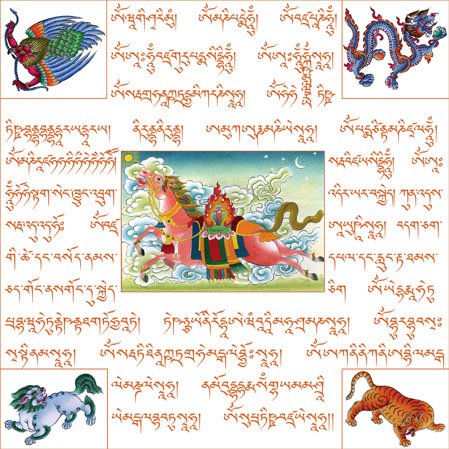
Represented in the corners of many Tibetan prayer flags, these four animals are: the Garuda (Kyung), the Sky Dragon (Druk), the Snow Lion (Seng), and the Tiger (Tak).
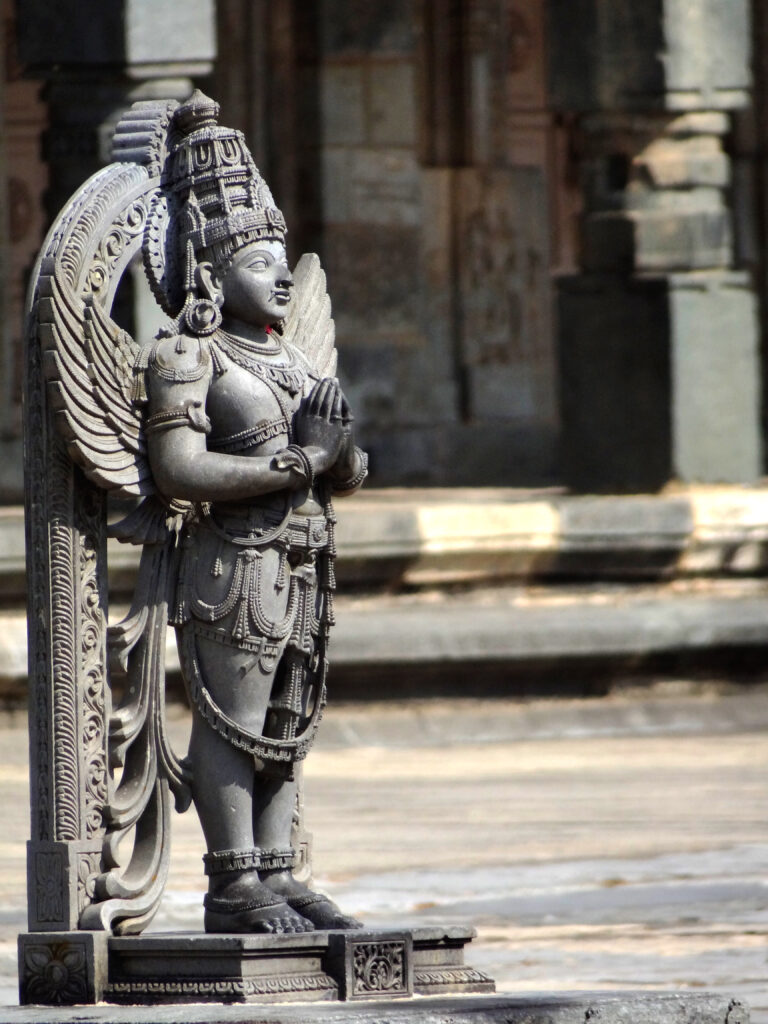
By Ananth H V – Own work, CC BY-SA 3.0, https://commons.wikimedia.org/w/index.php?curid=21106963
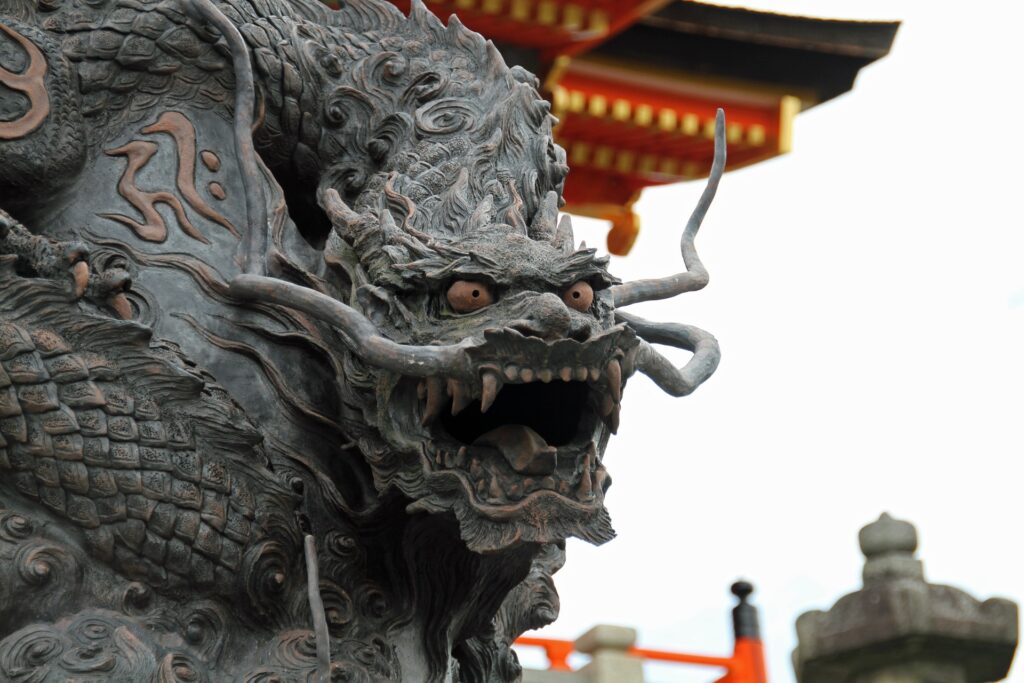
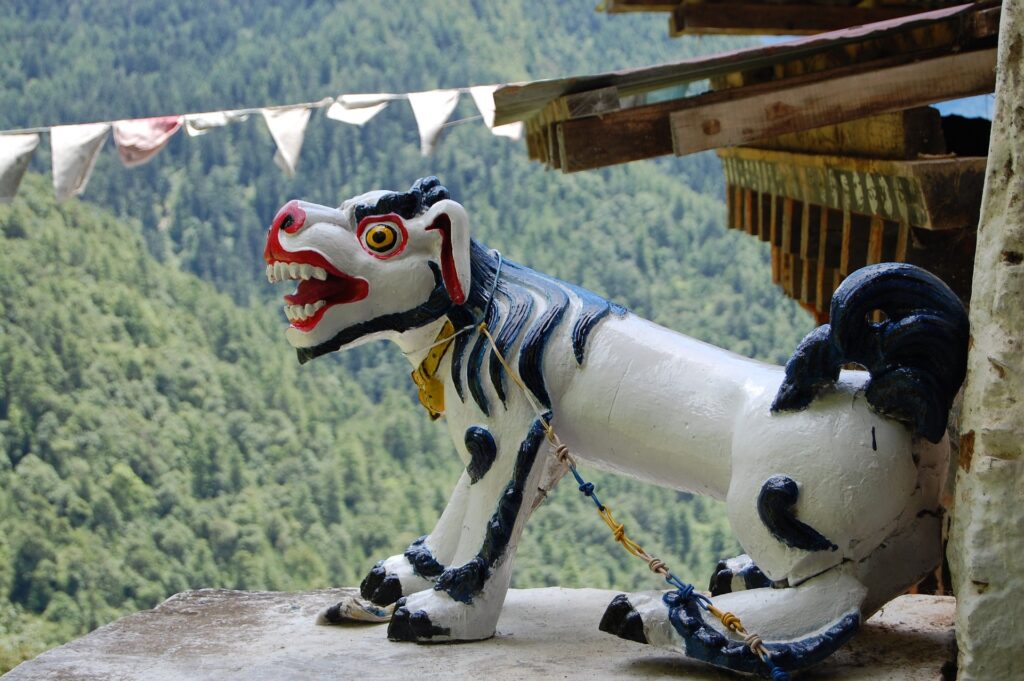
-Roof_Tile_End_MET_39053-1-973x1024.jpg)
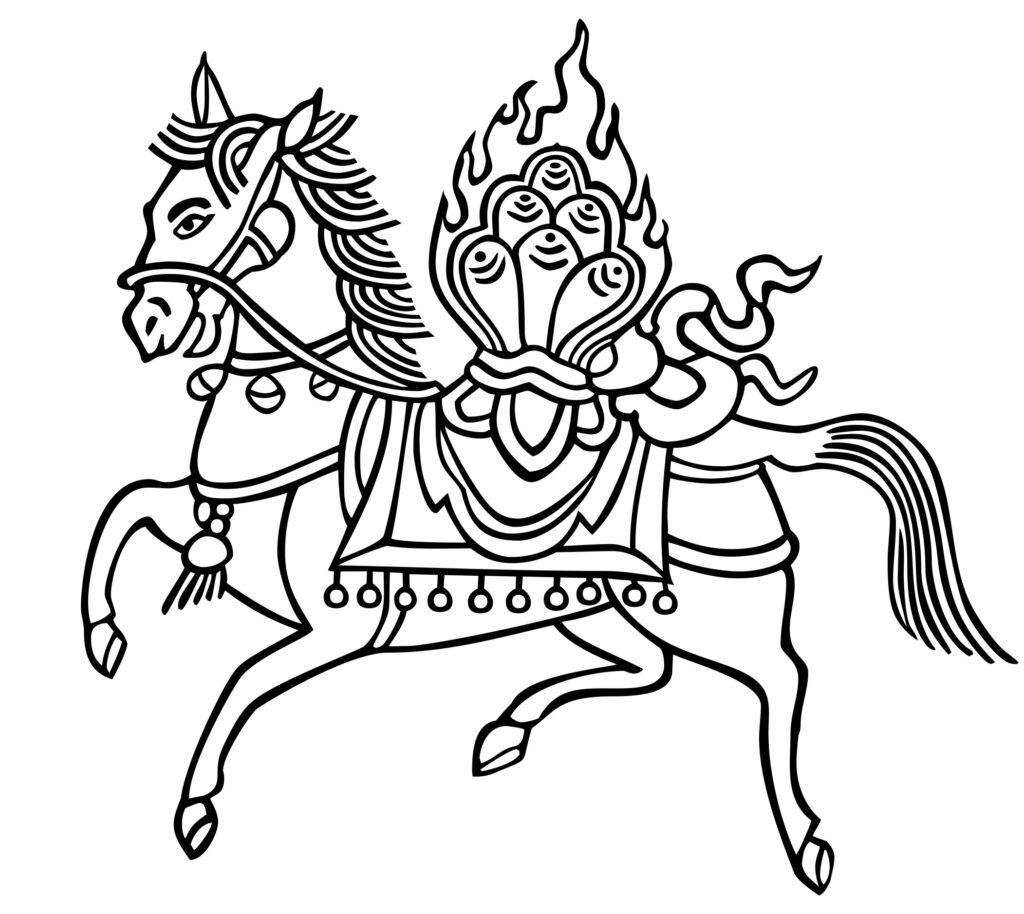
Known collectively as “The Four Dignities,” they represent the sacred qualities and attitudes that Bodhisattvas develop on the path to enlightenment; qualities such as confidence (Tiger), clear awareness (Snow Lion), fearlessness (Garuda), and gentle power (Dragon).
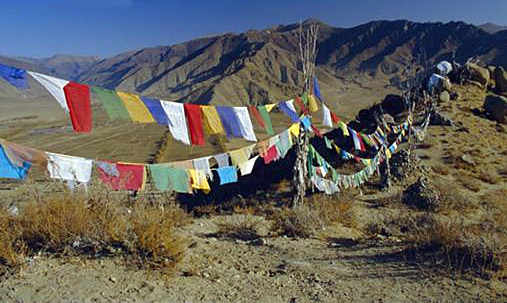
Traditionally, flags would always be recognizable by the designs of a horse in the center of the composition surrounded by four other animals: a lion, a tiger, a bird, and a dragon. The identities of the four animals have not always been consistent: on the first Bon prayer flags, a white yak was considered one of the four, and it is also believed that the bird depicted on Buddhist flags is a Garuda, which has its origins in Indian culture and literature, while the image of the bird on Bon flags has a different meaning and history. Buddhist prayer flags are generally a mixture of Indian Buddhist and Tibetan “lungta” flags. At the center of the Buddhist texts displayed on Indian flags, and also on Tibetan prayer flags, is the long “dharani,” a series of letters or syllables very similar to a mantra. The “Dharani” is often associated with the goddess Dvajagrakeyura (in Sanskrit: ध्वजाग्रकेयुरा), whose name means “she who has a flag at the top of her arm,” a female deity of Vajrayana Buddhism, who governs protection and purification; she is an emanation, or creation, of the Buddha, just like Ushnishavijaya, an important figure in Mahayana and Vajrayana Buddhism, venerated as a goddess of long life, healing and purification, born from a ray of light coming from the “Ushnisha,” a protuberance on the top of the Buddha’s head.
In the Lungta of the Four Cosmic Animals of Tibet is enclosed the essence of the process of spiritual development, aimed at deepening and promoting authentic presence; it is called the path of the warrior of the four dignities. known as the “evolutionary path of deepening and promoting authentic presence”. This path is linked to the incorporation of an ever-wider space in the individual world, so that in the end it can reach the realization called “universal monarch”. As this world becomes ever wider, of course, any notion of egocentric existence becomes ever more remote; therefore the path of the Four Dignities is also connected to the realization of the absence of selfishness. The four dignities are meekness, vibrancy, outrageousness, and inscrutability.